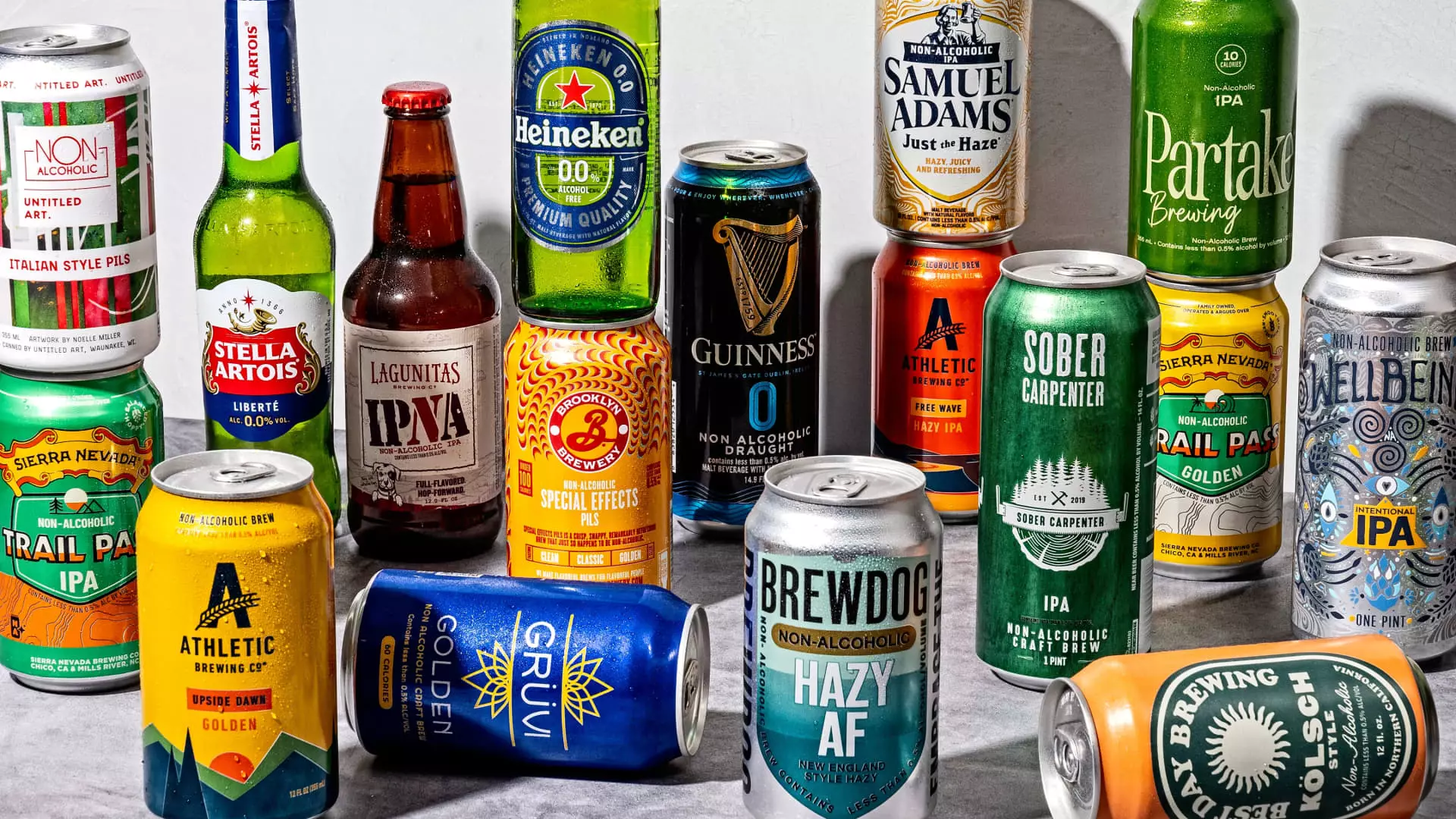In recent years, non-alcoholic beer has emerged from the shadows of the beverage industry, poised to make a bold statement that disrupts traditional notions of social drinking. The IWSR has forecasted that this surprising sector could soon eclipse ale as the second-largest beer category globally, a projection that reflects the shifting preferences of a new generation. While overall beer consumption has seen a slight decline, non-alcoholic beer is experiencing a remarkable growth spurt, boasting a 9% increase in volume worldwide. This trend isn’t just a fleeting moment; it’s indicative of a cultural transformation as consumers reevaluate their relationship with alcohol.
Increasingly, younger generations are opting for mindful consumption, a stark contrast to previous norms that glamorized heavy drinking. Terms like “sober curious” and “damp lifestyle” filter through conversations among Gen Z and millennials who seem to be leading the charge towards moderation. Unlike their predecessors who might have equated partying with beer cans, this demographic showcases a more discerning approach, favoring quality of experience over quantity of alcohol. This isn’t merely a statistical anomaly; it’s a wake-up call for brands to adjust their strategies swiftly or risk obsolescence.
The Power of Choice: What Drives Non-Alcoholic Beer’s Popularity?
Today’s consumers are there not only to enjoy quality but also to exercise their choice. They want options—especially healthy ones. In this context, non-alcoholic beer is emerging as an attractive alternative, allowing people to participate in social rituals without the hangover that often accompanies traditional drinking. Growth in this market is propelled by a variety of factors, including improvements in taste and an influx of investment from established beer brands eager to capitalize on changing preferences.
The landscape is rife with competition as giants like Heineken and Anheuser-Busch InBev race to roll out their versions of zero-proof beer, highlighting the urgent need to cater to a market that is evolving at an unprecedented pace. Beyond just quenching thirst, these brews offer a newfound freedom to revel without excess, embodying a significant shift in consumer expectations.
Moreover, the uptick in non-alcoholic beer is particularly evident in markets like Germany, Spain, and Japan, where consumption has surged. The U.S., while still lagging behind in overall penetration, is quickly catching up thanks to trailblazing entrants like Athletic Brewing, whose offerings have conquered a staggering 17% of the no-alcohol market only a few years after its inception. The radical transformation of a fledgling brand into a market leader speaks volumes about consumer sentiments that are leaning towards conscious drinking habits.
Skepticism Around Celebrity Endorsements: A Double-Edged Sword
However, the rise of non-alcoholic beer isn’t without its pitfalls, particularly when functioning under the weight of celebrity endorsements. Numerous high-profile figures from Tom Holland to Dwyane Wade have ventured into this space, lending their names to brands and potentially shaping public perception in both positive and negative ways. The enthusiasm for celebrity-backed brands often raises questions regarding authenticity and whether these endorsements distract from the core essence of what non-alcoholic beer stands for—health consciousness over social status.
There’s a fine line between promoting a product and turning it into a fad, and the myriad of celebrity endorsements could risk frivolous positioning within a realm that genuinely values community and wellness. The real question remains: Are these endorsements enhancing the trustworthiness of non-alcoholic beer, or are they commodifying a movement that stands for moderation and mindful choices?
In essence, the trajectory of non-alcoholic beer reflects broader societal shifts. As consumers anchor themselves in the ethos of healthier living, the beverage industry must grapple with the realities of evolving consumer behavior. This isn’t merely a story about a burgeoning beer segment; it’s a narrative about finding balance, understanding moderation, and ultimately reimagining what it means to enjoy a drink in today’s world.


Leave a Reply